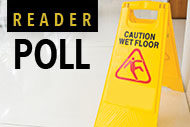Agencies issue hospital ransomware prevention, response guidance
The departments of Homeland Security, Justice, and Health & Human Services have issued technical guidance summarizing existing “best practices” to prevent and respond to ransomware incidents.
The departments note that in recent events, several health care organizations have been victims of cyberattacks. The fastest growing malware threat, ransomware can disrupt health care services and damage sensitive data beyond recovery and repair, the guidance notes. Recommended actions include educating personnel and implementing certain preventive and business continuity measures.
If infected, organizations should immediately report incidents to their Federal Bureau of Investigation Field Office Cyber Task Force or Secret Service field office for assistance, and to the FBI Internet Crime Complaint Center, the agencies advise.
CDC alerts health care facilities to emerging multidrug-resistant yeast
The Centers for Disease Control and Prevention (CDC) has received reports from international health care facilities that Candida auris, an emerging multidrug-resistant yeast, is causing invasive health care-associated infections with high mortality.
The CDC has released interim recommendations for reporting, laboratory diagnosis and infection control. It also gives best practices for environmental cleaning.
“Anecdotal reports have suggested that C. auris may persist in the environment. Health care facilities who have patients with C. auris infection or colonization should ensure thorough daily and terminal cleaning and disinfection of these patients' rooms using an Environmental Protection Agency-registered, hospital-grade disinfectant with a fungal claim.”
New ASHE wet location tool aids in compliance with NFPA 99
The American Society for Healthcare Engineering (ASHE) has developed a Wet Location Tool to help its members assess whether their operating rooms should be classified as wet procedure locations under the 2012 edition of NFPA 99: Health Care Facilities Code.
The tool is in beta testing, and ASHE encourages members to download the tool and provide feedback.
CMS corrects errors in recently adopted fire safety code
The Centers for Medicare & Medicaid Services posted corrections in the Federal Register that remedy technical errors in its final rule on fire safety requirements in certain health care facilities.
The corrections mainly clarify types of facilities included in the recently adopted NFPA rules that are now part of its Conditions of Participation.
Participating health care facilities have until Nov. 7 to comply with all of the changes.
CDC grants $26 million to Prevention Epicenters
The Centers for Disease Control and Prevention has awarded $26 million to support applied research at five academic medical centers as part of a patient safety effort known as the Prevention Epicenters Program.
Prevention Epicenters develop and test new approaches to preventing infections and improving patient safety in health care settings. The new funding more than doubles previous awards, and expands and extends the Prevention Epicenters program to 2020.
Examples of new research the Epicenters are conducting to prevent health care-associated infections and the spread of dangerous bacteria include:
- Testing new strategies for regional, rather than single-facility, approaches to prevent infections and track transmission of antibiotic-resistant germs, including carbapenem-resistant Enterobacteriaceae
- Automatically detecting outbreaks from lab data





